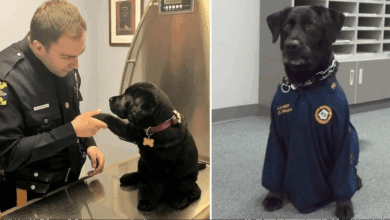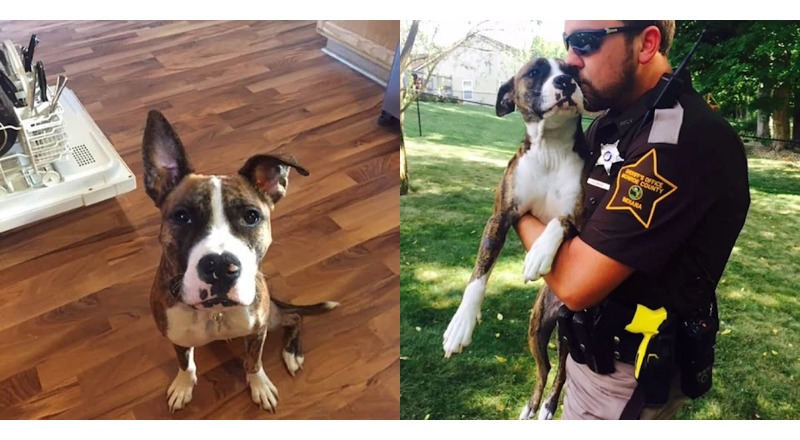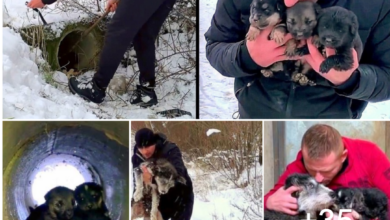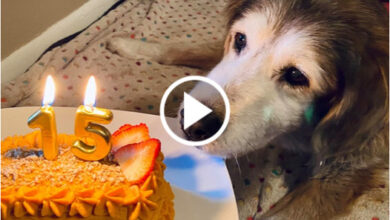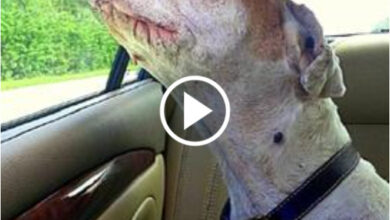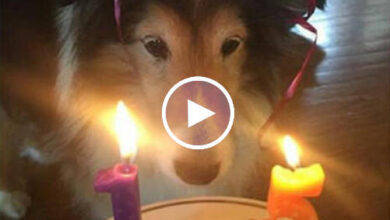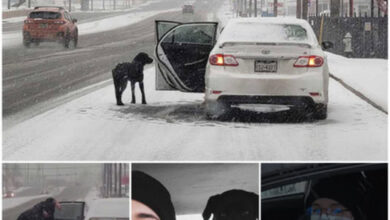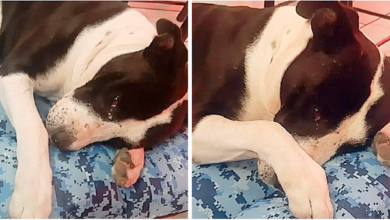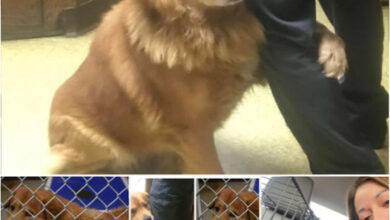Understanding Dog Sadness: Helping Your Furry Friends Overcome Emotional Distress

Have you ever noticed your beloved furry friend behaving differently, seeming a bit down, or showing signs of sadness? Dogs, just like humans, can experience a range of emotions, and sadness is one of them. As dog lovers, it’s crucial for us to recognize and address their emotional well-being, ensuring they lead happy and fulfilling lives.
In this comprehensive guide, we’ll delve into the world of dog sadness, exploring the signs, causes, and most importantly, how we can help our canine companions overcome their sadness. Whether you’re a seasoned dog owner or a new pup parent, understanding the complexities of dog sadness can make a world of difference in your four-legged friend’s life.
So, grab a cup of coffee, cozy up with your pup by your side, and let’s embark on this journey together, uncovering the secrets of dog sadness and discovering practical ways to uplift our furry friends’ spirits.”
Understanding Dog Sadness

Defining dog sadness and its impact on dogs’ well-being
When we talk about dog sadness, we refer to a state of emotional distress or unhappiness that dogs can experience. Just like humans, dogs are capable of feeling a range of emotions, including joy, fear, and yes, sadness. It’s essential for us as responsible dog owners to recognize and address their emotional well-being.
Dog sadness can have a significant impact on a dog’s overall well-being. When a dog is sad, it affects its quality of life and can lead to various physical and behavioral changes. Dogs that are sad may experience a loss of appetite, lethargy, withdrawal from social interactions, or a decrease in interest in activities they once enjoyed. Furthermore, prolonged sadness can weaken their immune system and make them more susceptible to illness.
Signs and symptoms of a sad dog
Recognizing the signs and symptoms of a sad dog is crucial in providing timely support and intervention. While dogs may not be able to express their emotions through words, they communicate through their body language and behavior. Here are some common signs and symptoms that may indicate a dog is feeling sad:
- Decreased energy and enthusiasm: A sad dog may appear lethargic and show less interest in activities they used to enjoy.
- Loss of appetite: Dogs experiencing sadness may have a reduced desire to eat or may completely lose interest in food.
- Excessive sleeping: Sad dogs may spend more time sleeping or seek solitude in an attempt to withdraw from the world.
- Avoidance of social interactions: Dogs that are sad may avoid interaction with their human family members or other animals.
- Changes in behavior: Sadness can manifest in changes in behavior, such as increased irritability, restlessness, or even destructive behaviors.
Highlighting the importance of early detection and intervention
Early detection and intervention are vital when it comes to addressing dog sadness. It’s important to remember that dogs rely on us to understand and support their emotional well-being. By recognizing the signs of sadness early on, we can take the necessary steps to help our furry friends.
Intervening promptly can prevent the sadness from escalating and becoming more challenging to overcome. By addressing the underlying causes and providing the appropriate support, we can help our dogs regain their happiness and overall well-being. Whether it’s through increased socialization, creating a positive environment, or seeking professional help, taking action is key to improving their emotional state.
In the next section, we will explore the various causes of dog sadness and delve into effective strategies to address and alleviate their distress. Remember, understanding dog sadness is the first step towards making a positive difference in your furry friend’s life.
Causes of Dog Sadness
Dog sadness can stem from various underlying causes, each requiring specific attention and intervention. Understanding these causes is crucial in effectively addressing and alleviating the sadness experienced by our furry companions. Here are the primary causes of dog sadness:
Loneliness and separation anxiety
Dogs are social animals that thrive on companionship and interaction. When they are left alone for extended periods or lack socialization opportunities, they can experience feelings of loneliness and separation anxiety. This can lead to sadness and distress.
Grief and loss
Dogs form deep emotional bonds with their human family members and fellow animal companions. Just like humans, they can experience grief and sadness when they lose a loved one. Whether it’s the loss of a fellow dog or a human family member, the absence can deeply affect their emotional well-being.
Changes in routine or environment
Dogs are creatures of habit and find comfort in a predictable routine and familiar surroundings. Significant changes, such as moving to a new home, disruptions in their daily schedule, or alterations in the family dynamic, can cause stress and contribute to feelings of sadness.
Health issues and pain
Dogs can experience physical discomfort and pain due to various health conditions. Chronic pain or undiagnosed medical issues can significantly impact their emotional state, leading to sadness and a decrease in overall well-being.
Recognizing a Sad Dog: Signs and Communication

Behavioral changes indicating sadness
When a dog is feeling sad, it may exhibit certain behavioral changes that can serve as indicators. These signs may include:
- Decreased appetite or loss of interest in food.
- Lethargy and reduced energy levels.
- Withdrawal from social interactions and decreased enthusiasm for activities they once enjoyed.
- Excessive sleeping or difficulty sleeping.
- Increased vocalization, such as whining or whimpering.
- Changes in bathroom habits, including accidents or loss of housetraining.
- Destructive behavior, such as chewing or digging.
- Excessive whining or paw licking.
It’s important for dog owners to be observant and recognize these behavioral changes as potential signs of sadness. This awareness can help prompt appropriate action and support for the dog.
Understanding the body language and vocal cues of a sad dog
Dogs communicate their emotions through their body language and vocalizations. Understanding their cues can provide insights into their emotional state. Signs of a sad dog may include:
- Drooping ears and a tucked tail.
- Avoiding eye contact or displaying a vacant stare.
- Hunched posture and a lack of enthusiasm in movements.
- Excessive panting or heavy sighing.
- Whining, whimpering, or howling sounds.
By paying attention to these non-verbal cues, dog owners can gain a better understanding of their pet’s emotional well-being.
Tips for effective communication and building trust with a sad dog
Effective communication and building trust are essential when dealing with a sad dog. Here are some tips to facilitate a stronger bond and support their emotional needs:
- Use a calm and soothing tone of voice when interacting with the dog.
- Give them space when they need it, allowing them to approach and initiate contact.
- Engage in positive reinforcement training techniques to build confidence and trust.
- Establish a consistent routine to provide a sense of security.
- Offer physical affection, such as gentle petting or massage, to provide comfort.
- Provide a safe and quiet space where the dog can retreat and relax.
By implementing these strategies, dog owners can effectively communicate with their sad dog and help them feel more secure and loved.
Helping a Sad Dog

Providing emotional support and companionship
One of the most crucial ways to help a sad dog is by providing them with emotional support and companionship. Engaging in activities that strengthen the bond between the dog and their owner can greatly improve their emotional well-being. Some ideas include:
- Regular interactive play sessions, such as fetch or tug-of-war, to stimulate their mind and body.
- Going on daily walks or hikes together, providing them with exercise and fresh air.
- Setting aside quality time for cuddling, petting, and showing affection.
- Engaging in training exercises that challenge and stimulate their mental abilities.
By actively participating in these activities, dog owners can provide the emotional support and companionship that their sad dog needs.
Creating a positive and stimulating environment
Creating a positive and stimulating environment is crucial for a sad dog’s well-being. Here are some ideas to enhance their environment:
- Provide interactive toys and puzzles that mentally stimulate the dog.
- Rotate toys regularly to prevent boredom.
- Create a designated safe space, such as a cozy bed or crate, where the dog can retreat to when they need alone time.
- Use calming aids like music or pheromone diffusers to create a soothing atmosphere.
These environmental enhancements can help uplift the dog’s mood and alleviate their sadness.
Addressing physical and health needs
Physical well-being is closely linked to emotional well-being. To help a sad dog, it’s important to address their physical needs:
- Provide a balanced and nutritious diet suitable for their age and health requirements.
- Ensure they receive regular exercise to keep them physically active and mentally stimulated.
- Schedule routine veterinary check-ups to address any underlying health issues that may contribute to their sadness.
Taking care of their physical health can positively impact their overall emotional state.
Seeking professional help
In some cases, a sad dog may require professional assistance. If the dog’s sadness persists or worsens despite efforts to help them, it’s crucial to seek guidance from a veterinarian or animal behaviorist. These professionals can provide expert advice, conduct assessments, and recommend appropriate interventions to address the underlying causes of the dog’s sadness.
By involving the expertise of professionals, dog owners can ensure that their beloved pet receives the comprehensive support they need to overcome their sadness.
Remember, each dog is unique, and the strategies that work for one may not work for another. It’s essential to observe and understand your dog’s individual needs and tailor your approach accordingly.
Overall, by recognizing the signs of a sad dog, understanding their communication cues, and providing the necessary support, dog owners can make a significant difference in improving their dog’s emotional well-being and helping them lead a happier, more fulfilling life.
Preventing Dog Sadness

Early socialization and positive experiences
Preventing dog sadness starts with early socialization and positive experiences. Here’s why it matters:
Early socialization: Introduce your dog to various people, animals, and environments during their critical socialization period (typically between 3 and 14 weeks). This helps them develop confidence and adaptability, reducing the likelihood of future anxiety or sadness.
Positive experiences: Expose your dog to positive situations, such as playdates with friendly dogs, enjoyable outings, and rewards-based training. These experiences build positive associations, boost their emotional well-being, and prevent the development of fear or sadness-related issues.
Remember, a well-socialized dog is more likely to be emotionally resilient and less prone to sadness.
Mental and physical stimulation
To prevent dog sadness, it’s crucial to provide mental and physical stimulation. Consider the following tips:
Interactive toys and puzzles: Engage your dog’s mind with interactive toys that dispense treats or require problem-solving skills. This mental stimulation keeps them engaged and wards off boredom and sadness.
Training and learning activities: Regular training sessions not only teach your dog important skills but also provide mental stimulation and strengthen the bond between you and your furry companion.
Daily exercise: Ensure your dog gets sufficient physical exercise based on their breed, age, and energy level. Regular walks, playtime, and structured activities like agility or fetch keep them physically fit and mentally stimulated.
By incorporating mental and physical stimulation into your dog’s routine, you can prevent boredom, restlessness, and the associated sadness that can result.
Maintaining a healthy lifestyle
A healthy lifestyle plays a vital role in preventing dog sadness. Consider the following aspects:
Proper nutrition: Feed your dog a balanced and nutritious diet appropriate for their age, breed, and health needs. Good nutrition supports their overall well-being, including mental and emotional health.
Regular exercise: Regular physical activity is essential for a dog’s mental and physical health. Engage them in activities that match their energy level and provide regular exercise to prevent pent-up energy, frustration, and potential sadness.
Veterinary care: Schedule regular check-ups with your veterinarian to monitor your dog’s health, detect any underlying medical conditions early on, and ensure they receive necessary vaccinations and preventive treatments.
By maintaining a healthy lifestyle, you create a strong foundation for your dog’s emotional well-being, reducing the likelihood of them experiencing sadness.
Frequently Asked Questions
What are the signs that my dog is experiencing sadness?
Common signs of dog sadness may include decreased appetite, changes in sleep patterns, loss of interest in activities, excessive lethargy, and increased vocalization. However, it’s important to consult with a veterinarian to rule out any underlying medical conditions.
How can I help my sad dog feel better?
To help your sad dog feel better, you can try engaging in activities that your dog enjoys, such as walks, playtime, and mental stimulation. Providing a consistent routine, ensuring a balanced diet, and offering plenty of affection and reassurance can also be beneficial. If the sadness persists, consulting with a professional dog trainer or a veterinarian is recommended.
Can dogs experience depression?
Yes, dogs can experience depression. Just like humans, they can go through periods of emotional distress and exhibit symptoms similar to depression. However, it’s essential to consult with a veterinarian to rule out other potential medical issues that may be causing the behavior changes.
Is it helpful to get another dog as a companion for my sad dog?
Introducing another dog as a companion can be helpful for some sad dogs, but it’s not a universal solution. Each dog is unique, and their compatibility with other dogs may vary. It’s important to consider factors such as the temperament and energy level of both dogs and to introduce them gradually under controlled circumstances.
When should I seek professional help for my sad dog?
If your dog’s sadness persists for an extended period, worsens over time, or significantly affects their quality of life, it’s advisable to seek professional help. A veterinarian or a professional dog behaviorist can provide guidance, assess any underlying issues, and recommend appropriate treatment options.
Conclusion
In this article, we explored the important topic of dog sadness. We discussed its impact on dogs’ well-being, the signs of a sad dog, and the causes behind their sadness. This article also delved into recognizing a sad dog through behavioral changes and understanding their body language and vocal cues.
Then provided strategies for helping a sad dog, including emotional support, creating a positive environment, addressing physical needs, and seeking professional help when necessary. Additionally, we highlighted the significance of prevention through early socialization, mental and physical stimulation, and maintaining a healthy lifestyle.
It’s crucial for dog owners to be proactive in recognizing and addressing dog sadness. By being attentive to their needs, providing support, and seeking help when necessary, we can make a positive impact on their emotional well-being.
As responsible dog owners, let’s commit to creating a happier, healthier environment for our beloved dogs. By implementing the strategies discussed in this article, we can prevent and address dog sadness.
Read more:





